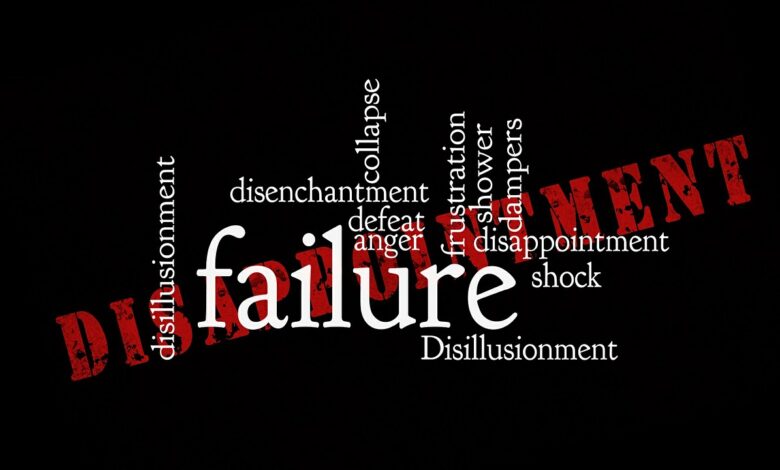Common Causes of Business Failure

Introduction
In the fast-paced business world, success and failure often overlap. Understanding the intricacies of business failure is crucial for entrepreneurs navigating the treacherous waters of commerce. By dissecting the common causes of business failure, individuals can equip themselves with the knowledge to steer their ventures toward success.
Understanding the Dynamics of Business Failure
Business failure is not merely a result but a process shaped by various internal and external factors. It’s not always a sudden event, but it can be a gradual decline from underlying organizational issues. Recognizing the signs of impending failure and addressing them proactively is essential for mitigating risks and ensuring long-term viability.
Importance of Identifying Common Causes
Identifying common causes of business failure is a roadmap for entrepreneurs, guiding them away from pitfalls. By studying past failures and understanding the root causes, businesses can implement preventive measures to safeguard against similar outcomes. Moreover, learning from failure fosters a culture of continuous improvement, driving innovation and resilience within organizations.
External Factors Contributing to Business Failure
Economic Downturns
The economy’s ebb and flow can profoundly impact businesses, especially during periods of recession or economic downturns. Reduced consumer spending, tightened credit markets, and decreased demand for goods and services can squeeze profit margins and strain cash flow. Businesses must adopt adaptive strategies to weather economic storms, such as diversifying revenue streams and optimizing operational efficiency.
Impact of Recession on Businesses
During economic downturns, businesses often face declining sales and shrinking profit margins, making it challenging to sustain operations. Layoffs, budget cuts, and reduced investments become standard measures to offset financial losses, further exacerbating the situation. Surviving a recession requires resilience, strategic planning, and a willingness to adapt to changing market conditions.
Strategies to Navigate Economic Challenges
To navigate economic challenges successfully, businesses must focus on conserving resources, optimizing cash flow, and identifying new growth opportunities. Diversifying revenue streams, exploring untapped markets, and investing in innovation can position businesses to thrive despite economic uncertainties. Additionally, fostering strong relationships with suppliers, customers, and stakeholders can provide a buffer against financial shocks.
Technological Disruptions
In today’s digital age, technological disruptions are reshaping industries and challenging traditional business models. Rapid technological advancements, such as artificial intelligence, automation, and blockchain, are revolutionizing how businesses operate and deliver value to customers. Embracing these technological innovations is essential for staying competitive and future-proofing businesses against obsolescence.
Adapting to Technological Advances
Businesses that need to adapt to technological advances avoid falling behind competitors and losing relevance in the market. Embracing digital transformation initiatives, investing in cutting-edge technologies, and fostering a culture of innovation are crucial steps towards staying ahead of the curve. Moreover, leveraging data analytics and predictive technologies can provide valuable insights for strategic decision-making and market forecasting.
Consequences of Technological Obsolescence
Technological obsolescence poses significant risks to businesses that cling to outdated systems and processes. Legacy technology can impede productivity, hinder scalability, and compromise cyber security, leaving businesses vulnerable to disruption. To mitigate the risks of technological obsolescence, companies must prioritize digital readiness, invest in upskilling employees, and adopt agile methodologies for rapid innovation.
Changing Consumer Preferences
Consumer preferences constantly evolve due to shifting demographics, cultural trends, and socioeconomic factors. Businesses that need to anticipate and adapt to these changes risk losing market share and relevance. Staying attuned to consumer behavior through market research, customer feedback, and data analytics is essential for identifying emerging trends and aligning products and services with evolving needs.
Anticipating Market Shifts
Businesses must proactively monitor market trends, competitor activities, and consumer sentiment to anticipate shifts in consumer preferences. Businesses can identify emerging opportunities and adjust their strategies by analyzing demographic data, social media trends, and purchasing patterns. Moreover, engaging with customers through surveys, focus groups, and online forums can provide valuable insights into their preferences and pain points.
Aligning Products with Consumer Trends
To remain competitive in today’s dynamic marketplace, businesses must align their products and services with current consumer trends and preferences. This may involve product diversification, customization options, or rebranding efforts to resonate with target audiences. Investing in customer relationship management (CRM) systems and personalized marketing strategies can also enhance customer engagement and loyalty.
Competitive Pressures
In today’s hypercompetitive business landscape, businesses face relentless pressure from rivals vying for market share and dominance. Price wars, product differentiation, and aggressive marketing tactics are commonplace in competitive industries. To survive and thrive amidst competitive pressures, businesses must develop strategic responses to outmaneuver rivals and capture market opportunities.
Strategies to Stay Competitive
Staying competitive requires a multifaceted approach encompassing product innovation, brand differentiation, and customer-centric strategies. Businesses must continuously monitor competitor activities, benchmark performance metrics, and identify areas for improvement. Moreover, fostering a culture of innovation, agility, and collaboration can empower employees to drive meaningful change and stay ahead of competitors.
Overcoming Industry Rivalry
Successfully navigating industry rivalry requires businesses to carve out a unique value proposition that resonates with customers and sets them apart from competitors. This may involve…
Internal Factors Leading to Business Failure
Poor Leadership
Effects of Weak Leadership on Organizational Culture
Developing Effective Leadership Strategies
Lack of Strategic Planning
Importance of Long-term Planning
Creating a Clear Roadmap for Success
Financial Mismanagement
Common Financial Pitfalls
Implementing Effective Financial Management Practices
Operational Inefficiencies
Streamlining Processes for Improved Efficiency
Identifying and Addressing Operational Bottlenecks
Human Resource Challenges
Talent Acquisition and Retention
Building a Strong Talent Pipeline
Strategies for Employee Retention
Workplace Culture Issues
Cultivating a Positive Work Environment
Addressing Toxic Workplace Culture
Leadership Failures
Impact of Leadership on Employee Morale
Developing Strong Leadership Skills
Marketing and Sales Pitfalls
Ineffective Marketing Strategies
Common Mistakes in Marketing Campaigns
Crafting a Successful Marketing Strategy
Sales Shortfalls
Improving Sales Conversion Rates
Enhancing Sales Techniques and Processes
Ignoring Customer Feedback
Importance of Customer Feedback in Business Growth
Implementing Feedback Mechanisms for Continuous Improvement
Product or Service Related Issues
Lack of Innovation
Importance of Innovation in Business Success
Strategies for Fostering Innovation
Quality Control Problems
Ensuring Product Quality and Consistency
Implementing Quality Control Measures
Failure to Adapt
Embracing Change and Adaptation
Flexibility as a Key to Survival
Financial Challenges
Cash Flow Problems
Managing Cash Flow Effectively
Strategies for Improving Cash Flow
Overexpansion
Risks of Rapid Expansion
Sustainable Growth Strategies
Debt Burden
Managing Debt Responsibly
Avoiding Excessive Debt Accumulation
Conclusion
Key Takeaways from Common Business Failures
Building Resilience and Success in Business




